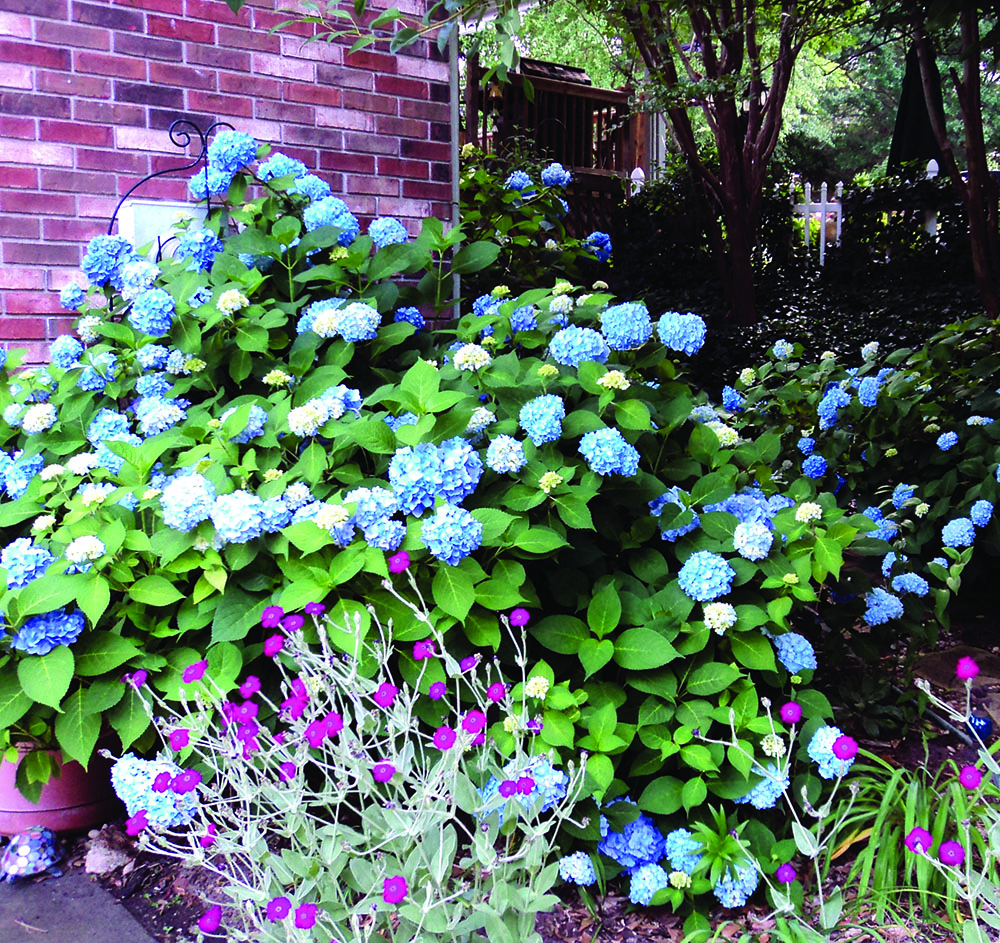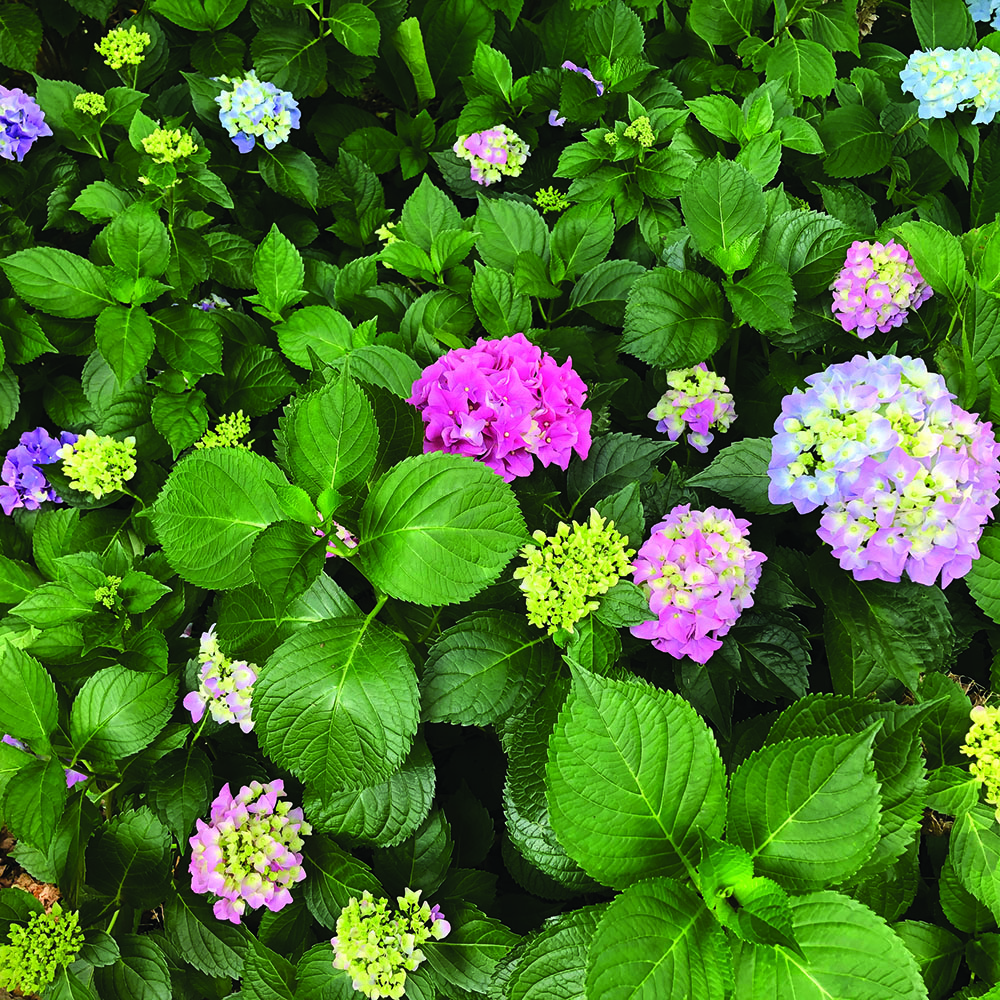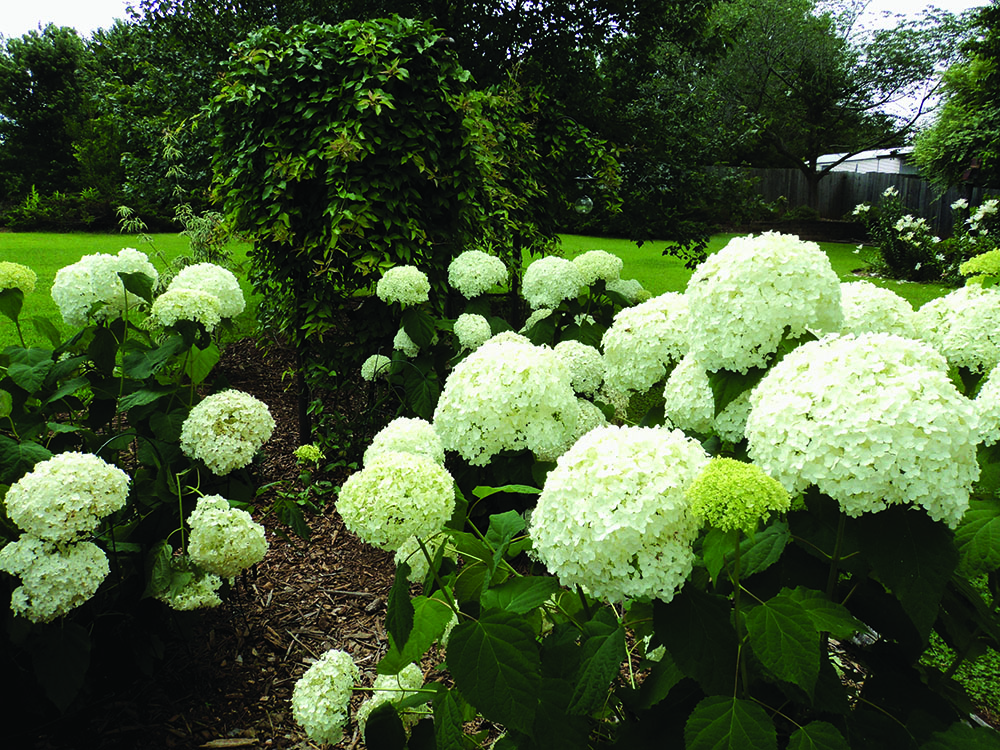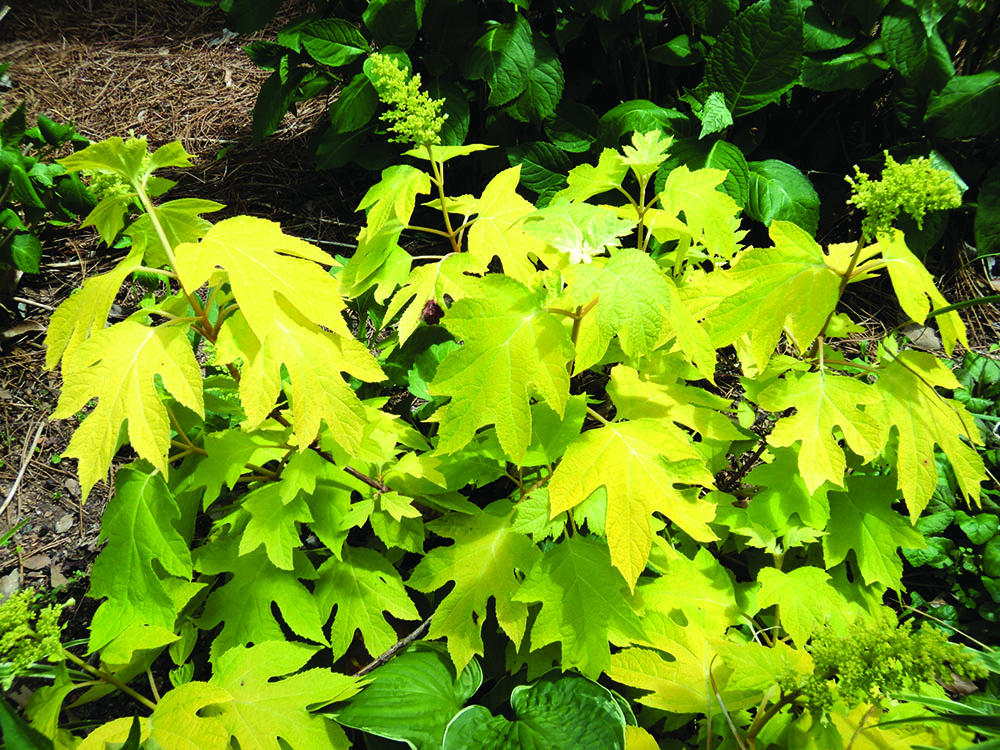When walking around my garden, I didn’t realize I had so many different hydrangeas, mostly because of my friend Maggie who sniped and broke off any hydrangea branch she saw in anybody’s garden! I used to tell her I was going to report her to the ´garden police´ but no matter, for she was in pursuit of finding the ultimate hydrangeas. And I must admit my garden benefited greatly for the hydrangea blooms have been glorious this year!
So, take a moment to picture the true quintessential southern garden, chances are good that you will see hydrangeas with big round bushes of pink and blue blooms surrounding a front porch. That’s because these plants for years are truly a favorite among many southern gardeners. It is easy to see why people love them so much. But did you know, they have been around for a long time with the oldest fossils found in western U.S. and Canada dating back 65 million years. More recent fossils have also been found in Asia, where people first started cultivating the flowers thousands of years ago. Hydrangeas were not known in Europe until 1736 when a colonist Peter Collison brought a North American variety back from the Pennsylvania colony to England. It was given the name ´hydrangea´ for the Greek words ´hydor´ meaning water and ´angos´ meaning jar or vessel roughly translating to water barrel referring to its need for plenty of water and its cup-shaped flower. Around 1775 they took the world by storm, spreading all over and quickly became a go-to flower for bouquets, vases, and front yard landscaping.
In North America, there are five species of hydrangeas…bigleaf, panicle, oakleaf, smooth, and climbing. Of course, there are dozens of varieties and even more cultivars. But in general, keeping it simple, just remember this: there are just three basic bloom types: mopheads, lacecaps, and cones. This will help you determine what you like, making the shrub selection process a bit easier to find your ultimate hydrangea(s).
The mopheads and lacecaps are the bigleaf spring and summer bloomers, varieties like ´Bloomstruck´ and ´Endless Summer´ (rebloomer) and lacecap ´Wedding Gown´ and ´Lemon Wave´ that can be grown just for its leaf coloration of green, white, and blotches of bright yellow. Cone shape are summer bloomers like ¨Vanilla Strawberry´ with their white and pink panicles, ´Little Lime´, and cute, little ´Bobo´ a must have for small gardens and containers. In addition, I like the smooth hydrangeas like ´Annabelle´ with its huge, round, white flowers or the pink delicate flowers of ´Invincible Spirit´ where every plant sold, a dollar is donated to Breast Cancer Research Foundation. And don´t forget, the oakleaf with their spring and summer blooms, like ´Snowflake´ give it plenty of room to spread or ´Little Honey´ with its honey color leaves and smaller cone shape white flowers…a showstopper.
Whatever your selection of hydrangea just remember that the majority prefer morning sun and afternoon shade. The Oakleaf Hydrangea can tolerate a little more shade but no hydrangea will bloom in deep shade. They like ample amount of water especially in long, hot droughts. Make a trench around the shrub, fill with mulch and water 2 or 3 times a week during dry periods. Don´t over fertilize them just add a little organic matter each year, unless you are growing them in pots then fertilize with half-strength of liquid fertilizer. The white hydrangeas will always be white, but the pink and blue can be manipulated by the pH levels in the soil. The exact color depends largely on acidic or alkaline levels of the soil. Alkaline soils produce purples and pinks while acidic soils result in the bluish tints. And sometimes, if the soil has a mix of aluminum accumulation you will get pink and blue flowers on the same plant. If your flower production is low, usually it is one of three things, late freezes, too much shade or improper pruning.
In general, hydrangea shrubs have a long lifespan, gracing our landscape with a strong presence and colors for many years. And of course, most of us already have hydrangeas in our gardens. But with so many new varieties on the market, maybe you have not found your ultimate hydrangea yet! ■





